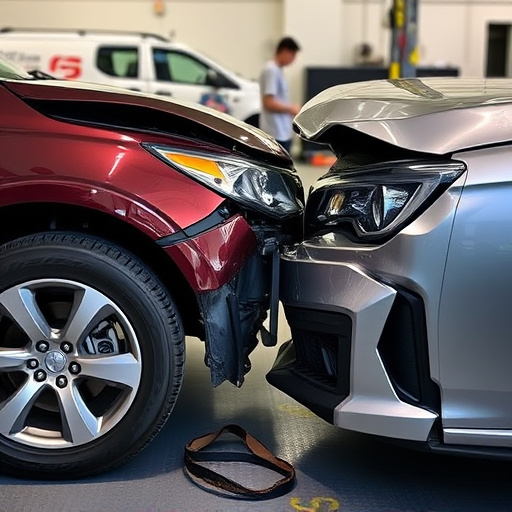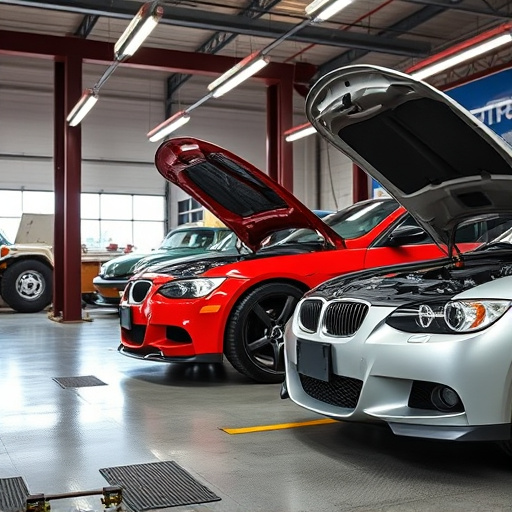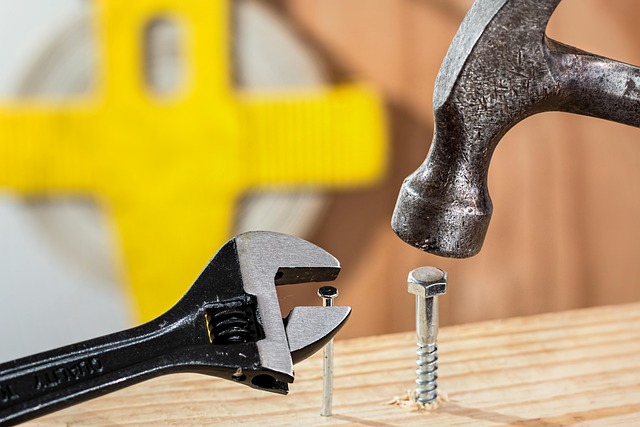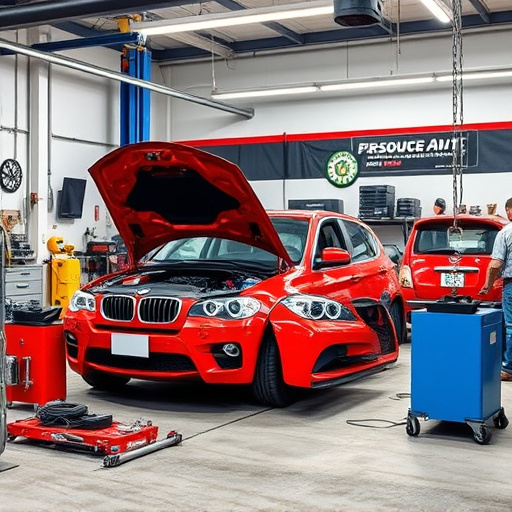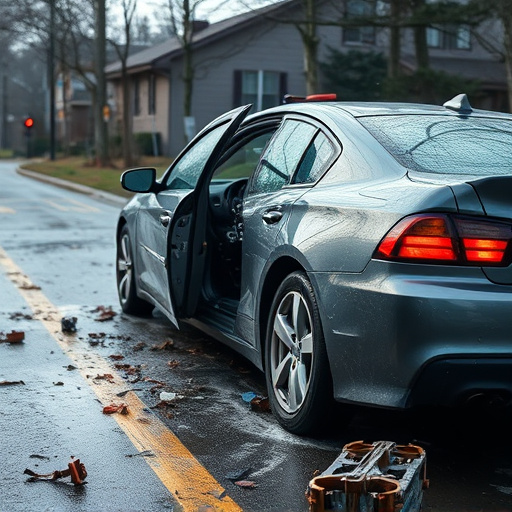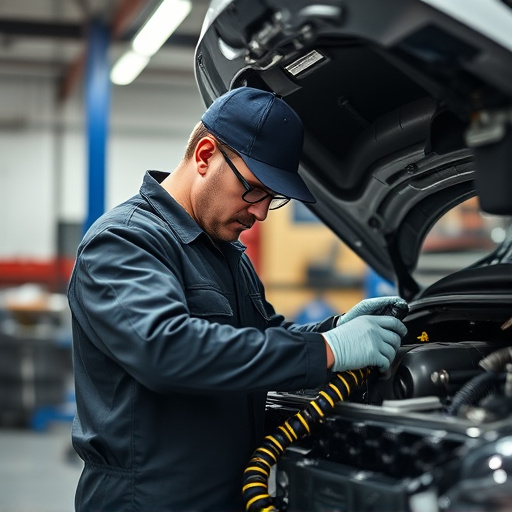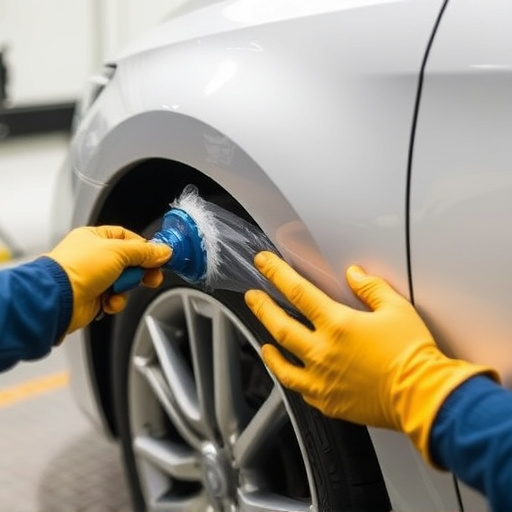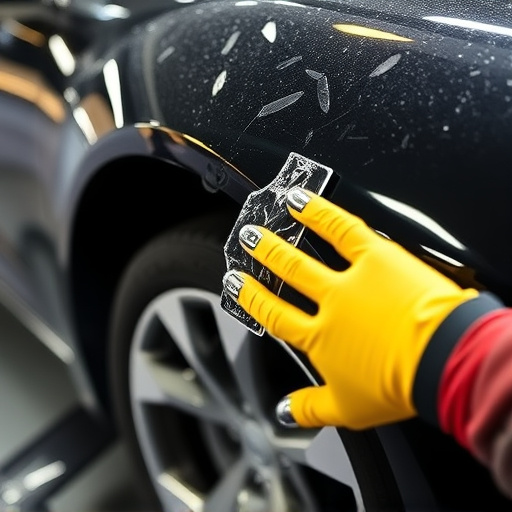Spot welding equipment, a specialized toolset for automotive repairs, uses high-frequency electricity to melt metal and create strong bonds. Core components include an electrical power source, electrodes, and control systems for precise adjustments. This technology enhances vehicle durability and safety by strengthening structural integrity in repairs like bumper fixes. Versatile and efficient, spot welding is crucial for joining thin metal panels in modern car bodies, with regular maintenance ensuring consistent quality and minimizing errors.
The art of repairing metal structures often relies on spot welding, a precise and powerful technique. This process utilizes specialized spot welding equipment to create strong, localized bonds. In this article, we demystify the science behind resistance spot welding, offering insights into its operation and the essential role it plays in effective repairs. We’ll guide you through understanding and choosing the right spot welding equipment, ensuring optimal performance for your metalworking needs.
- Understanding Spot Welding Equipment: The Basics
- How Resistance Spot Welding Works: The Science Behind the Process
- Choosing and Maintaining Resistance Spot Welding Equipment for Effective Repairs
Understanding Spot Welding Equipment: The Basics

Spot welding equipment is a specialized toolset designed for making precise and strong welds in automotive and vehicle body repair. At its core, spot welding involves using high-frequency electrical energy to melt a small area of metal, creating a bond between two pieces. This process is particularly crucial in car body shop settings where structural integrity is paramount, such as in bumper repair or general vehicle body repair.
The equipment typically consists of an electrical power source, electrodes, and control systems. The power source generates the high-frequency current that heats the metal, while the electrodes hold and direct the energy to the specific spot being welded. Control systems allow for precise adjustment of power, time, and distance, ensuring consistent and quality welds. This technology enables efficient and effective repair, enhancing the overall durability and safety of the vehicle.
How Resistance Spot Welding Works: The Science Behind the Process

Resistance spot welding is a precise and powerful technique used extensively in the automotive industry for years. This process involves applying electric current through a metal joint, causing resistance heating that fuses two or more pieces together. The science behind it lies in the controlled application of heat, pressure, and timing. Specially designed spot welding equipment delivers a concentrated burst of energy to a precise point on the metal, melting through the base material and creating a strong bond between the sheets. This method is particularly crucial for joining thin metal panels commonly found in modern car bodies, ensuring structural integrity without adding excessive weight – a key factor in automotive design.
The process starts with positioning two or more metal pieces with their edges aligned. A welding gun then makes contact with the joint, and an electric current passes through the metal, generating heat due to resistance. This heat softens the metal, creating a pool of molten metal at the weld point. As pressure is applied, the metal flows together, solidifying into a strong, permanent bond upon cooling. The efficiency and precision of spot welding equipment make it a go-to for auto detailing and car bodywork services, where quick, clean, and reliable bonding is essential for safety and aesthetics.
Choosing and Maintaining Resistance Spot Welding Equipment for Effective Repairs

Choosing the right spot welding equipment is a crucial step for any automotive body shop looking to offer high-quality car paint services and effective vehicle bodywork repairs. The right machinery should be selected based on the specific needs of the repair process, including the type of metal being worked on and the desired level of precision. Resistance spot welding equipment, in particular, has gained popularity due to its ability to create strong, precise welds on a variety of materials used in modern vehicles.
Proper maintenance of this equipment is equally vital for ensuring optimal performance and longevity during car paint services or any bodywork repairs. Regular cleaning, calibration checks, and routine component replacements are essential practices. By adhering to these standards, automotive body shops can guarantee consistent welding quality, reduce the risk of errors, and ultimately provide superior vehicle bodywork that meets industry standards and customer expectations.
Spot welding equipment is an indispensable tool in the realm of repairs, offering precision and efficiency. By understanding the science behind resistance spot welding, we can select and maintain these tools effectively. This ensures that repairs are not just functional but also long-lasting, enhancing the overall quality and durability of the finished product. With the right spot welding equipment, folks in various industries can foster superior workmanship and revolutionize their repair processes.

